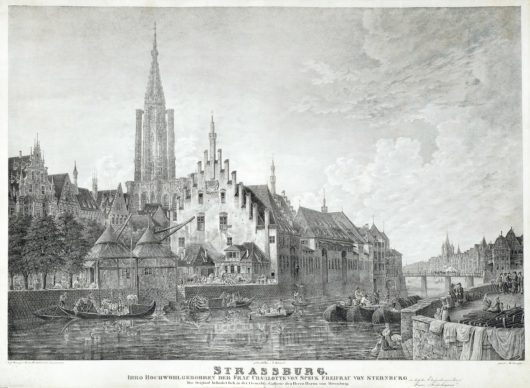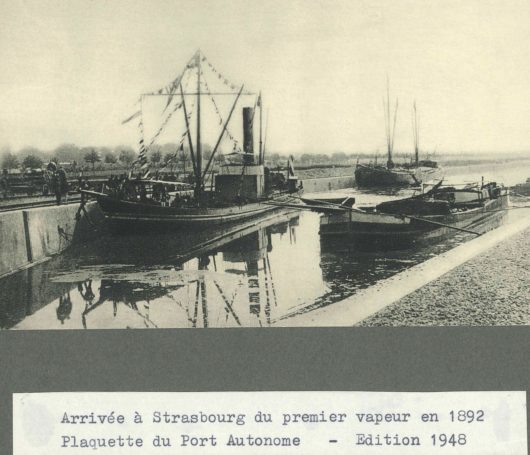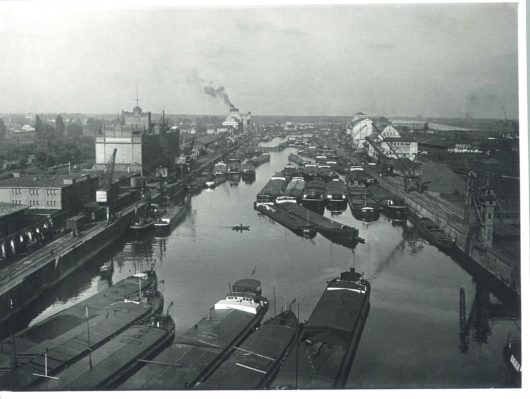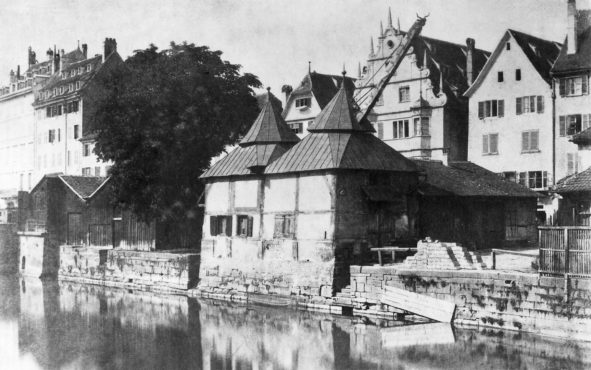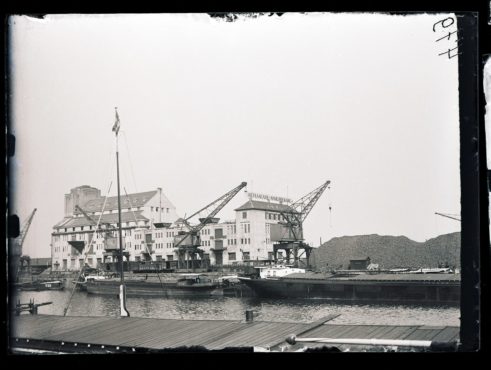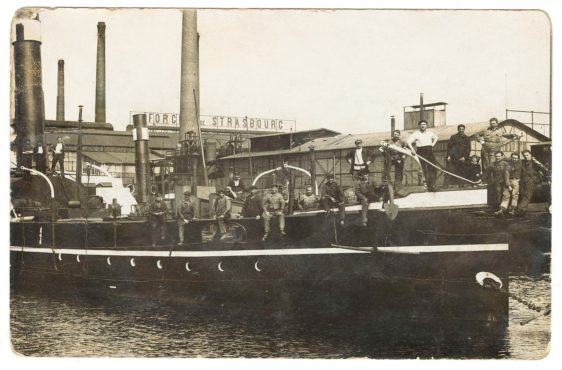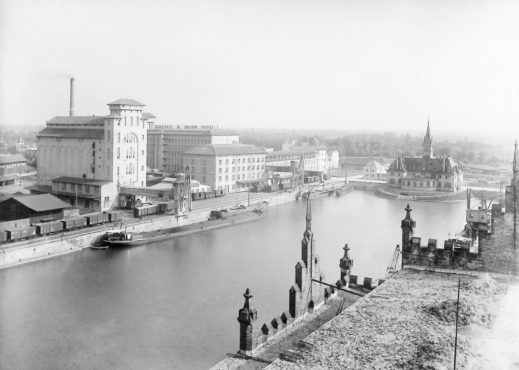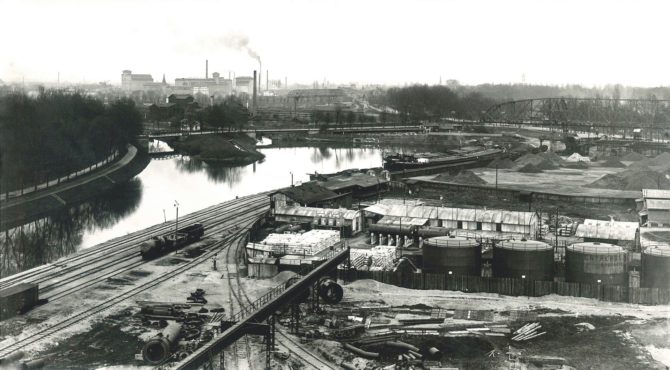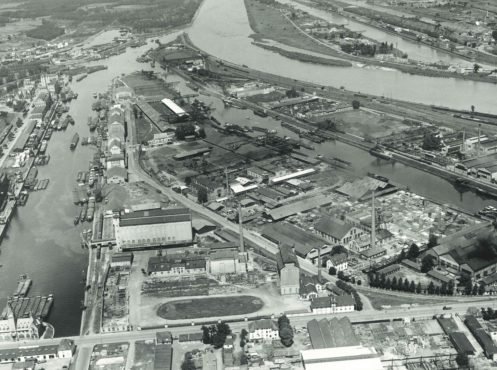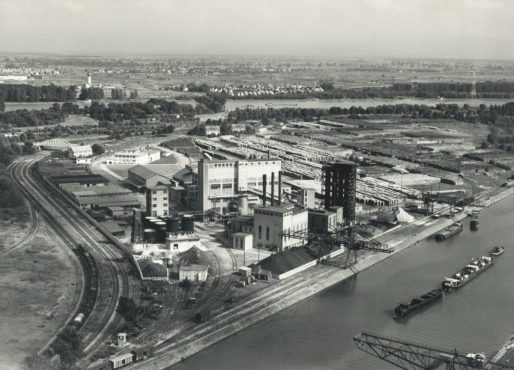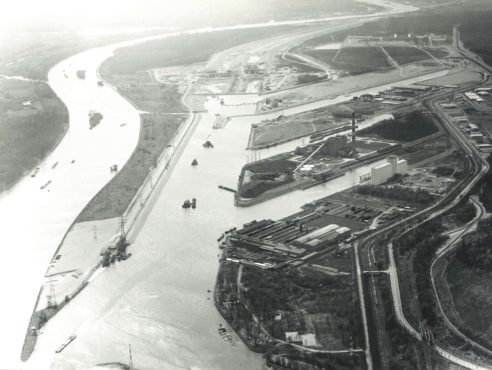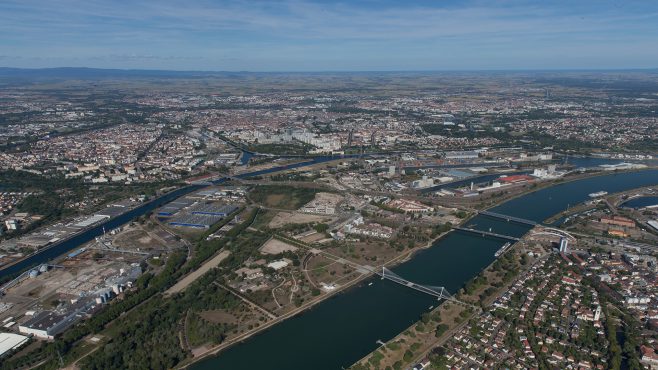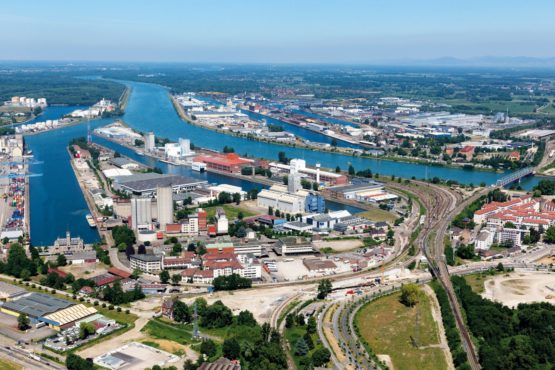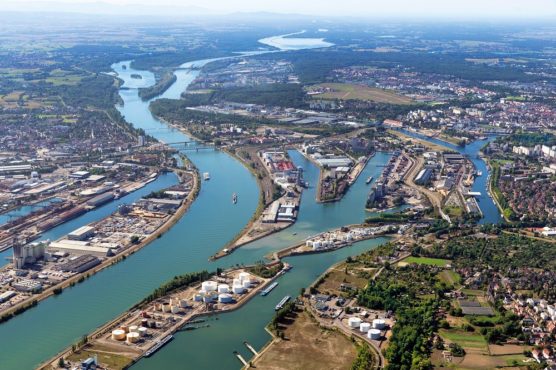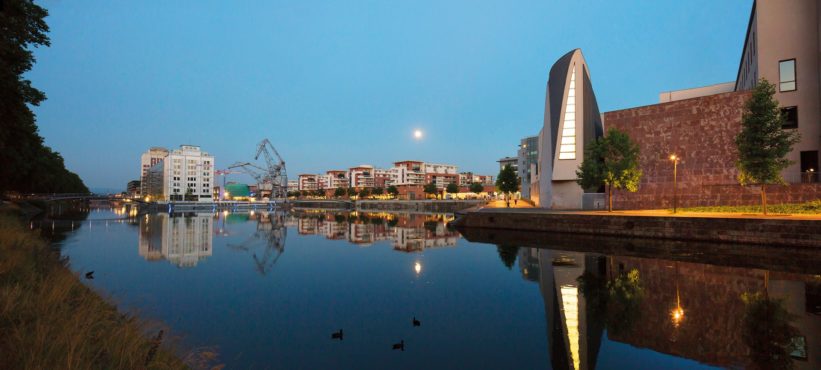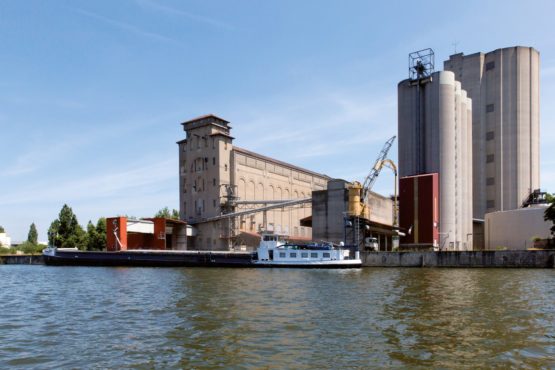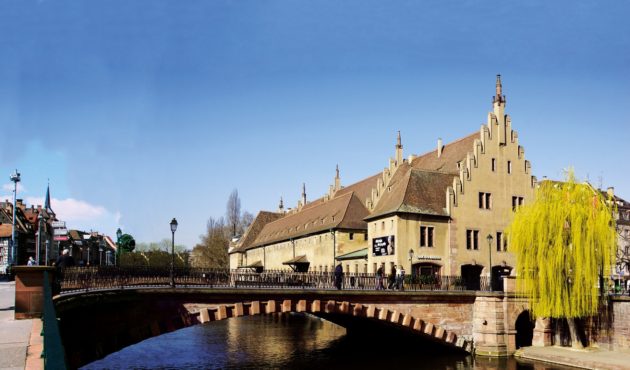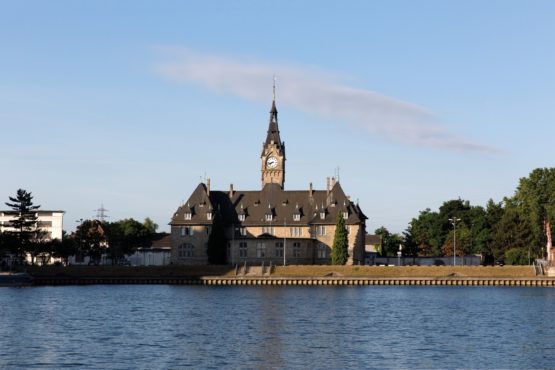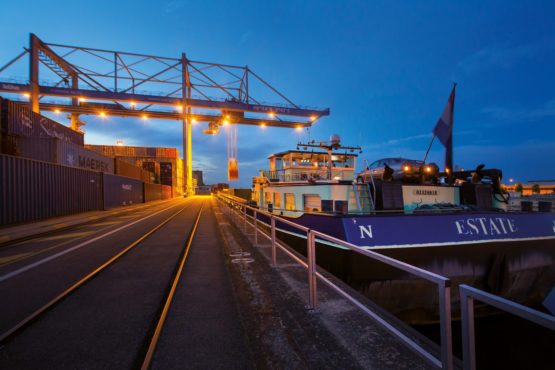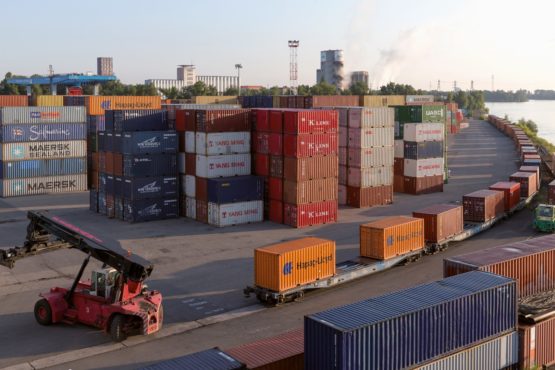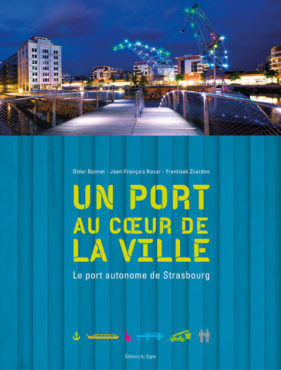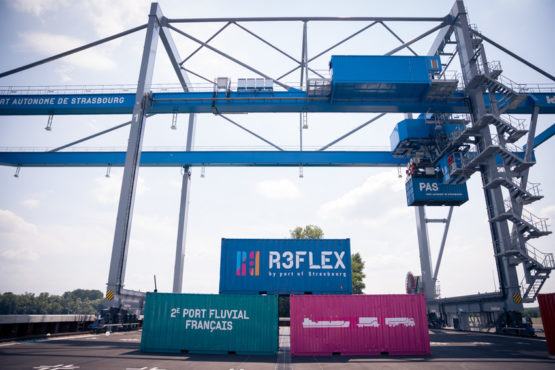The Trade Dock (Bassin de Commerce) and the Industry Dock (Bassin de l’Industrie), both with direct access to the Rhine, were created in the early 20th century. The port was still a municipal venture.
In 1926, the Port of Strasbourg (Port Autonome de Strasbourg – PAS) was created in the form of a public establishment, in application of an agreement between the French State and the City of Strasbourg, with a view to ensuring the extension of the port installations. The PAS celebrated its 90th anniversary in 2016.
The establishment has continued to develop Strasbourg’s port area, creating the southern lock (Ecluse Sud) and the Ramparts, Vauban and René Graff Docks (Bassin des Remparts, Bassin Vauban, Bassin René Graff) in the period from 1927 to 1931, the oil terminal (Port aux Pétroles) in 1927 (with an extension in 1963), and the north and south outports (1927 and 1935), followed by the southern part of the port (starting in 1950), and developing additional areas between Marckolsheim and Lauterbourg.
